User:JPxG/!
Drafts and sandbice
|
|---|
|
|
User:JPxG[edit]
|
On here, I'm just some guy who's an editor for fun. I'm the editor-in-chief of the Signpost, and write some articles for it: check it out! I take lots of photos: one is a Featured Picture. Check out my Commons userpage if you want to see more. Below is some of the stuff I've done around here, mostly so I can keep track of it. If you are trying to form an opinion of me quickly, take a look at this software and this article. Private inquiries can be made through EmailUser or directly to jpxg-dëv at prötönmail döt cöm (type it in without the umlauts). Software[edit]
These will help you be a cool guy, like me.
The ones after this are pretty boring, and recommended only for extreme nerds.
Articles created[edit]
The best[edit]
The rest[edit]Stubs—or as I call them, "GAs that haven't been finished yet".
Essays / templates / categories[edit]
Other[edit]
GA reviews I've done of others' articles[edit]
Islands[edit]
Bad jokes and other deleted nonsense[edit]
|
User:JPxG/Alexander Hart[edit]
|
Drafts: * · 01 · 02 · 03 · 04 · 05 · 06 · 07 · 08 · 09 · 11 · 12 · 13 · 14 · 15 · 16 · 17 · 18 · 19 · 20 · 21 · 22 · 23 · 24 · 25 · 26 · 27 · 28 · 29 ·2 · 3 · 4
Sandbice: * · 01 · 02 · 03 · 04 · 05 · 06 · 07 · 08 · 09 · 10 · 11 · 12 · 13 · 14 · 15 · 16 · 17 · 18 · 66 · 88 · 89 · 98 · 99
Alexander Hart (October 1, 1839 – September 21, 1911) was a major in the Confederate Army during the American Civil War. American Civil War[edit]Hart hailed from New Orleans and commanded soldiers from the Fifth Louisiana Regiment during the war.[1] A veteran of many battles, Hart led troops in the Confederate victories at the Second Battle of Winchester (see Winchester II Confederate order of battle), and Second Battle of Kernstown (which Hart noted in his journal). Hart recorded in his journal that his regiment also participated in pushing back Union troops at the Battle of Smithfield Crossing. During the Battle of Strasburg, Hart's regiment captured numerous Union troops. Hart noted in his journal that his regiment "Captured a Lt. Col. And some dirty non-coms. Officers and men." Some sources claim that Hart fought at the Battle of Monocacy (see Monocacy Confederate order of battle), but his journal makes no mention of this battle. Rather, Hart records traveling with his troops across Virginia on the date of the battle. Hart also led his regiment at the Battle of Gettysburg. On the second day of the battle, Hart led the 5th Louisiana in a charge up East Cemetery Hill. Wounded in his left hand by the fire of the 107th Ohio Infantry, Hart was replaced in command of the regiment by Captain Thomas Briscoe of Company K.[2] He spent the rest of the summer of 1863 recovering from his wound and was certified as permanently disabled in November.[3] Hart mentions in his journal that he was injured in battle upon at least two occasions—first at Antietam and at the Battle of Opequon. Simon Wolf's 1895 book, The American Jew as Patriot, Soldier and Citizen, notes that Hart first held the rank of a non-commissioned colonel before being commissioned as a major in 1863. After returning to Confederate territory as part of a prisoner exchange, Hart later was assigned to the general staff of a Montgomery, Alabama-based General Williams. Religious/Personal life[edit]Hart was born in New Orleans, the oldest of Isaac and Julia Hart's twelve children. He married his fiancée, Leonora Levy, (mentioned in his journal entry dated November 30, 1864, as "Leonna") in Richmond, Virginia, August 15, 1866, and had four children. (See the Hart family genealogy). Two of Leonora's brothers also fought for the Confederacy, including Captain Ezekiel "Zeke" Levy and Isaac J. Levy, both of the 46th Virginia Infantry. The latter was killed in action on Sunday, August 21, 1864, just shy of his twenty-second birthday. Isaac J. Levy's tombstone contains descriptions of his valor and commitment to his faith. One such example of his adherence to the strictures of Jewish observance are contained in a letter to his sister, Leonora, in which he describes the observance of his last Passover in 1864. Captain Ezekiel Levy is mentioned in Hart's diary's April 2, 1865, entry. Hart's sister-in-law (Leonora's sister), Sarah Levy, married Corporal Edwin I. Kursheedt, a soldier in the Louisiana Washington Artillery battalion. Many Jewish soldiers are listed as having fought under Hart in The American Jew as Patriot, Soldier and Citizen. Among the Jewish officers who fought in the Louisiana Fifth were Lieutenant L.S. Lipman, who died in battle May 9, 1863, and is buried in the Cemetery for Hebrew Confederate Soldiers in Richmond, Virginia, and Captain David Cohen Labatt. About Labatt, the book notes that "...in consequence of severe illness, contracted in the service, resulting in chronic asthma, Captain Labat was compelled to resign his commission, J. Bankhead Magruder, the General commanding, endorsed the Captain's letter of resignation with the words: 'Captain Labat's resignation is a loss to the public service.'" It is probable that, while in New Orleans, Hart worshiped at the Shangarai Chasset (Gates of Mercy) congregation. (In 1873 this congregation merged with another New Orleans Jewish congregation to form the present-day New Orleans Touro Synagogue.) In his journal, while leaving Richmond by train on April 2, 1865, Hart mentions that "Be. Florance was...there." A Benjamin Florance (as well as an Isaac Hart, likely his father) are listed among the founding trustees of that New Orleans synagogue in the December 1843 issue of the Occident and American Jewish Advocate.[3] Hart briefly writes in his journal about his observance of the Passover holiday during 1865 en route to serve General Williams. Hart settled after the war in Staunton, Virginia, where, in 1876, he continued the family's commitment to Jewish community by organizing and becoming the founding president of the Temple House of Israel synagogue, a position he held for eighteen years. The building which housed Hart's original congregation still stands in central Staunton. As the Jewish community in nearby Harrisonburg, Virginia, became more organized and established a Sunday school for the young, Hart provided guidance. John Wayland, in his History of Rockingham County (c. 1912) writes that in 1890 "Major Hart of Staunton..." confirmed the first class in the congregation's "...new place of worship." Robert Rosen, in The Jewish Confederates, notes that after living in Staunton, Hart moved to Norfolk, Virginia. He was active in the Confederate War Veterans, serving as a commander in the Pickett-Buchanan Camp in Norfolk. Hart was reported to have led services in the Ohef Sholom Temple [4] when the rabbi was absent. Hart died in ten days shy of his seventy-second birthday, and was buried in Norfolk. His tombstone reads "Major Alexander Hart, 5th La. Inf. C.S.A."[4] References[edit]Citations[edit]
Bibliography[edit]
External links[edit]
|
User:JPxG/Allylurea[edit]
|
Drafts: * · 01 · 02 · 03 · 04 · 05 · 06 · 07 · 08 · 09 · 11 · 12 · 13 · 14 · 15 · 16 · 17 · 18 · 19 · 20 · 21 · 22 · 23 · 24 · 25 · 26 · 27 · 28 · 29 ·2 · 3 · 4
Sandbice: * · 01 · 02 · 03 · 04 · 05 · 06 · 07 · 08 · 09 · 10 · 11 · 12 · 13 · 14 · 15 · 16 · 17 · 18 · 66 · 88 · 89 · 98 · 99
Allylurea is a chemical compound which is most known for User:JPxG being too lazy to ever get around to writing an article about it. |
User:JPxG/Bi-LSTM[edit]
|
Drafts: * · 01 · 02 · 03 · 04 · 05 · 06 · 07 · 08 · 09 · 11 · 12 · 13 · 14 · 15 · 16 · 17 · 18 · 19 · 20 · 21 · 22 · 23 · 24 · 25 · 26 · 27 · 28 · 29 ·2 · 3 · 4
Sandbice: * · 01 · 02 · 03 · 04 · 05 · 06 · 07 · 08 · 09 · 10 · 11 · 12 · 13 · 14 · 15 · 16 · 17 · 18 · 66 · 88 · 89 · 98 · 99
Bidirectional long short-term memory is an artificial neural network architecture used for deep learning. Background[edit]Since the origin of computing, artificial intelligence has been an object of study, but during the second half of the 20th century, processing power became more easily accessible and computer-based research became more commonplace. The term "machine learning", used as early as 1959 by IBM researcher Arthur Samuel,[1] currently encompasses a broad variety of statistical learning, data science and neural network approaches to computational problems (often falling under the aegis of artificial intelligence). The first neural network, the perceptron, was introduced in 1957 by Frank Rosenblatt.[2] This machine attempted to recognize pictures and classify them into categories. It consisted of a network of "input neurons" and "output neurons"; each input neuron was connected to every single output neuron, with "weights" (set with potentiometers) determining the strength of each connection's influence on output.[3] The architecture of Rosenblatt's perceptron is what would now be referred to as a fully-connected single-layer feed-forward neural network (FFNN). Since then, many different innovations have occurred, the most significant being the development of deep learning models in which one or more "layers" of neurons exists between the input and output.[4][5] Neural networks are typically initialized with random weights, and "trained" to give consistently correct output for a known dataset (the "training set") using backpropagation to perform gradient descent, in which a system of equations is used to determine the optimal adjustment of all weights in the entire network for a given input/output example.[5][4] In traditional feed-forward neural networks (like Rosenblatt's perceptron), each layer processes output from the previous layer only. Information does not flow backwards, which means that its structure contains no "cycles".[4] In contrast, a recurrent neural network (RNN) has at least one "cycle" of activation flow, where neurons can be activated by neurons in subsequent layers.[4] RNNs, unlike FFNNs, are suited to processing sequential data, since they are capable of encoding different weights (and producing different output) for the same input based on previous activation states. That is to say, a text-prediction model using recurrence could process the string "The dog ran out of the house, down the street, loudly" and produce "barking", while producing "meowing" for the same input sequence featuring "cat" in the place of "dog". Achieving the same output from a purely feed-forward neural network, on the other hand, would require separate activation pathways to be trained for both sentences in their entirety.[6][7] However, RNNs and FFNNs are both vulnerable to the "vanishing gradient problem"; since gradients (stored as numbers of finite precision) must be backpropagated over every layer of a model to train it, a model with a large number of layers tends to see gradients "vanish" to zero or "explode" to infinity before getting all the way across. To resolve this problem, long short-term memory (LSTM) models were introduced by Sepp Hochreiter and Jürgen Schmidhuber in 1995—1997, featuring a novel architecture of multiple distinct "cells" with "input", "output" and "forget" gates.[8][9][10]. LSTMs would find use in a variety of tasks that RNNs performed poorly at, like learning fine distinctions between rhythmic pattern sequences.[11] While LSTMs proved useful for a variety of applications, like handwriting recognition,[12] they remained limited in their ability to process context; a unidirectional RNN or LSTM's output can only be influenced by previous sequence items.[6] Similar to how the history of the Roman Empire is contextualized by its decline, earlier items in a sequence of images or words tend to take on different meanings based on later items. One example is the following sentence:Here, the "bird" is being used as a slang term for an airplane, but this only becomes apparent upon parsing the last word ("propeller"). While a human reading this sentence can update their interpretation of the first part after reading the second, a unidirectional neural network (whether feedforward, recurrent, or LSTM) cannot.[6] To provide this capability, bidirectional LSTMs were created. Bidirectional RNNs were first described in 1997 by Schuster and Paliwal as an extension of RNNs.[13] NLP crap[edit]Bidirectional algorithms have long been used in domains outside of deep learning; in 2011, the state of the art in part-of-speech (POS) tagging classifiers consisted of classifiers trained on windows of text which then fed into bidirectional decoding algorithms during inference; Collobert et al. cited examples of high-performance POS tagging systems whose decoding systems' bidirectionality was instantiated in dependency networks and Viterbi decoders.[14]
2015, Ling et al, compositional character models for open vocabulary word representation[16] 2015, Kawakami et al, representing words in context with multilingual supervision[17] 2016, Li et al, sentence relation modeling with auxiliary character-level embedding[18] Speech / handwriting[edit]In a 2005 paper, Graves et al. used bidirectional LSTMs for improved phoneme classification and recognition.[19] In a 2013 paper, Graves et al. used deep bidirectional LSTM for hybrid speech recognition.[20] 2014, Zhang et al, distant speech recognition using Highway LSTM RNNs[21] 2016, Zayats et al, disfluency detection with bi-LSTM[22]
Sequence tagging[edit]2015, Huang et al, bi-LSTM-CRFs for sequence tagging[24] Else[edit]2016, Kiperwasser et al., dependency parsing using bi-LSTM feature representations[25] 2016, Zhang et al., driving behavior recognition model with multi-scale cnn and bi-lstm[26] 2021, Deligiannidis et al. analyzed performance versus complexity of bi-RNNs versus volterra nonlinear equalizers in digital coherent systems.[27] 2021, Oluwalade et al, human activity recognition using smartphone and smartwatch sensor data[28] 2021, Dang et al, lstm models for malware classification (are they bidirectional?)[29] 2016, Lample et al, neural architectures for named entity recognition[30] 2016, Wang et al, image captioning with bi-LSTM[31]
References[edit]
Cite error: A list-defined reference named "comparison" is not used in the content (see the help page). |
User:JPxG/CCI links[edit]
|
Drafts: * · 01 · 02 · 03 · 04 · 05 · 06 · 07 · 08 · 09 · 11 · 12 · 13 · 14 · 15 · 16 · 17 · 18 · 19 · 20 · 21 · 22 · 23 · 24 · 25 · 26 · 27 · 28 · 29 ·2 · 3 · 4
Sandbice: * · 01 · 02 · 03 · 04 · 05 · 06 · 07 · 08 · 09 · 10 · 11 · 12 · 13 · 14 · 15 · 16 · 17 · 18 · 66 · 88 · 89 · 98 · 99
|
User:JPxG/CSD log[edit]
|
This is a log of all speedy deletion nominations made by this user using Twinkle's CSD module. (See also: User:JPxG/XfD log and User:JPxG/PROD log) September 2020[edit]
October 2020[edit]
November 2020[edit]
December 2020[edit]
January 2021[edit]
February 2021[edit]
March 2021[edit]
April 2021[edit]
May 2021[edit]
June 2021[edit]
July 2021[edit]
August 2021[edit]
September 2021[edit]
November 2021[edit]
December 2021[edit]
January 2022[edit]
March 2022[edit]
April 2022[edit]
May 2022[edit]
June 2022[edit]
July 2022[edit]
August 2022[edit]
October 2022[edit]
November 2022[edit]
December 2022[edit]
January 2023[edit]
February 2023[edit]
May 2023[edit]
June 2023[edit]
July 2023[edit]
August 2023[edit]
September 2023[edit]
October 2023[edit]
November 2023[edit]
January 2024[edit]
May 2024[edit]
|
User:JPxG/Coolpix[edit]
User:JPxG/DYKch[edit]
{{DYK checklist
<!--Usage instructions: If the article/nomination is compliant with the relevant guideline, put "y"; if not, state what the problem is --->
|
newness = <!---Was the article created, expanded (5x), moved to mainspace, or promoted to Good Article status within 7 days of the nomination?---> | length = <!---Is the article at least 1500 bytes long and not a stub?---> | eligibilityother = <!---Note other general eligibility problems here (for example, article previously appeared on DYK); leave blank for none---> | sourced = <!---Does the article contain at least one citation to a reliable source for each paragraph and direct quote?---> | neutral = <!---Does the article cover all major viewpoints in a straightforward manner without using promotional or overly negative language?---> | plagiarismfree = <!---Is the article free of material copied from other sources?---> | policyother = <!---Note other policy problems here (for example, article copied from another Wikipedia article without attribution); leave blank for none---> | hookcited = <!---Check to see if the hook fact is backed by a source. If it is, check the source (if readily available) and make sure it contains the fact and is reliable. "AGF" (assume good faith) may be entered if hook it cited to an offline source---> | hookinterest = <!---Is the hook reasonably interesting?---> | hookother = <!---Note other hook problems here (for example, hook is over 200 characters); leave blank for none---> | picfree = <!---If the hook has a picture, is it freely licensed? If no picture is used, put "NA"---> | picused = <!---Is the picture used in the article (hook image may be a crop of an article image)? If no picture is used, leave blank---> | picclear = <!---Is the picture easily discernible at 100px? If no picture is used, leave blank---> | qpq = <!---Check to make sure the nominator did a proper QPQ. If no QPQ was required (for example, user has less than five DYK credits), put "NA"---> | status = <!---Put "y" if no problems, "?" for minor problems, "maybe" if nomination needs work, "no" if completely ineligible, "again" to request another reviewer take a look---> | comments = | sign = ~~~~
}} |
User:JPxG/Draft[edit]
References[edit] |
User:JPxG/Draft01[edit]
User:JPxG/Draft02[edit]
User:JPxG/Draft03[edit]
User:JPxG/Draft04[edit]
User:JPxG/Draft05[edit]
User:JPxG/Draft06[edit]
User:JPxG/Draft07[edit]
User:JPxG/Draft08[edit]
User:JPxG/Draft09[edit]
User:JPxG/Draft11[edit]
User:JPxG/Draft12[edit]
User:JPxG/Draft13[edit]
User:JPxG/Draft14[edit]
User:JPxG/Draft15[edit]
User:JPxG/Draft16[edit]
User:JPxG/Draft17[edit]
User:JPxG/Draft18[edit]
Sand screw[edit]Sand screws.[1] [2] [3] [4] [5] [6] [7] [8] [9] [10] [11] [12] [13] [14] [15] [16] [17] [18] [19] [20] References[edit]
|
User:JPxG/Draft19[edit]
Flame Warriors[edit]Posts.[1] [2] [3] [4] [5] [6] [7] [8] [9] [10] [11] [12] [13] [14] References[edit]
/[17] probably irrelevant [22] probably irrelevant [23] probably irrelevant [24] probably irrelevant [25] probably irrelevant [26] probably irrelevant [27] probably irrelevant [28] probably irrelevant [29] probably irrelevant [30] probably irrelevant [31] probably irrelevant [32] probably irrelevant [33]
--> |
User:JPxG/Draft2[edit]
References[edit]
|
User:JPxG/Draft3[edit]
References[edit] |
User:JPxG/Draft4[edit]
|
backpack girl[1] [2] [3] [4] [5] [6] [7] [8] References[edit]
|
User:JPxG/Dumb[edit]
  .gif)
Usage[edit]Used on Wikipedia to User Indexs and automatically use in Category:Indexed pages on wikipedia, don't copy this template code. example
Usage[edit]Used on Wikipedia to user User IP Cap. example
VoIP companies Networking companies
Usage[edit]Used on Wikipedia to user User IP Mode. example
Usage[edit]Used on Map on Wikipedia to User Map Local article. do not copy this template code because it automatically uses Category:Maps for the user. example
Category:disambig Category:Civil liberties by country
{{User Wikipedia/Civil liberties}} this Userbox in User page article "article" Wikipedia's,Don't copy the template code if you don't want to get into "trouble". "in" the article What is meant "is" Category:Civil liberties by country in "Wikipedia"
automatically used "in" Category:Copyright law,for each "user" wikipedia box.
Category:Freedom of expression
|
User:JPxG/Francis E. Dec[edit]
|
Francis E. Dec (January 6, 1926 – January 21, 1996) was an American lawyer and outsider writer[1] who was best known for his typewritten diatribes that he independently mailed and published from the late 1960s onward. His works are characterized by highly accusatory and vulgar attacks on various subjects, often making use of phrases like "Mad Deadly Worldwide Communist Gangster Computer God"[2] to slander hierarchies that he believed were engaging in electronic harassment against him. Biography[edit]Francis E. Dec was born in New York on January 6, 1926.[3] After the outbreak of the Second World War, he enlisted into the United States Army with the rank of private.[4] However, he remained within the United States for the duration of the war, albeit periodically moving between bases, at one point being assigned to Yuma Army Air Station. After the war, Dec entered into law, but was eventually disbarred by the state of New York in 1958 and proceeded to make numerous "incoherent" legal appeals, including an appeal to the Supreme Court. He was admitted to a psychiatric hospital for 60 days in 1961 and in 1965 attempted to flee his home in Hempstead, New York for Poland. Dec spent the next 25 years writing and distributing lengthy screeds about the "Worldwide Communist Gangster Computer God" and its conspiracy to control the world through electronic mind control devices, or influencing machines.[1] These flyers were mailed to radio and television stations across the United States.[5][6] Analysis[edit]Jeffrey Sconce analyzed the written works of Francis E. Dec in his book The Technical Delusion: Electronics, Power, Insanity, within a chapter discussing the phenomenon of targeted individuals.[5] In it, he states that "his writing speaks to a feature of technical delusions that became increasingly prominent in the second half of the twentieth century." Sconce also identifies that "Dec's screeds are emblematic in their careening, amplified panic over imperious yet chimerical powers that seemingly are everywhere all the time and yet can never be fully confronted or understood."[5] Legacy[edit]Dec gained a cult following in the 1980s, especially when specific fans of his attempted to contact him. In 1989, Dec went on a sojourn to New York, and fans attempting to contact him at his house were left facing his house in dismay:
Among other figures interested in Dec's works were William S. Burroughs and Genesis P-Orridge; the latter used a recording of his voice on the Psychic TV album "Ultrahouse (The L.A. Connection)".[2] A 1983 issue of Weirdo by Robert Crumb was based on Dec's works, and a stage play inspired by Dec, titled A History of Heen (not Francis E. Dec Esq.)[7] premiered in 1999.[5] See also[edit]References[edit]
External links[edit]
Warning: Default sort key "Dec, Francis" overrides earlier default sort key "Hart, Alexander". Category:Disbarred American lawyers Category:American conspiracy theorists Category:American people of Polish descent Category:American military personnel of World War II Category:Outsider literature Category:Pseudohistorians Category:20th-century American writers Category:1926 births Category:1996 deaths |
User:JPxG/IBM Tivoli Storage Manager[edit]
IBM Spectrum Protect (Tivoli Storage Manager) is a data protection platform that gives enterprises a single point of control and administration for backup and recovery. It is the flagship product in the IBM Spectrum Protect (Tivoli Storage Manager) family. It enables backups and recovery for virtual, physical and cloud environments of all sizes. This product is part of the IBM Spectrum Software Defined Storage suite of products and is unrelated to the Tivoli Management Framework. History[edit]TSM descended from a project done at IBM's Almaden Research Center around 1988 to back up VM/CMS systems. The first product that emerged was Workstation Data Save Facility (WDSF). WDSF's original purpose was to back up PC/DOS, OS/2, and AIX workstation data onto a VM/CMS (and later MVS) server. WDSF morphed into ADSTAR Distributed Storage Manager (ADSM) and was re-branded Tivoli Storage Manager in 1999.  The TSM database (through release 5.5) was a bespoke B+ tree database; although the TSM database uses many of the same underlying technologies as IBM's DB2, has a SQL engine (for read-only use), and supports access through ODBC, the database has an architectural limit of approximately 530 GB, and 13 GB of log space. Starting with TSM 6.1, released in May 2009, TSM uses a DB2 instance as its database (thus eliminating the architectural limitations of the previous TSM database). Product details[edit]TSM maintains a relational database (limit 534GB through TSM v5.5, 4TB with TSM v6.3.3+) and recovery log (aka transaction log, limit 13 GB through TSM v5.5, 128GB with TSM v6.1+) for logging, configuration, statistical information, and object metadata. v5.5 DB pages are always 4KB, and partitions every 4MB. Single row inserts only. On average, 20GB of space is consumed for every 25 million objects. Shallow directory structures use less TSM DB space than deeper paths. This database may generally be queried via an emulated SQL-98 compliant interface, or through undocumented SHOW, CREATE or DELETE commands. Actual user data is managed via a cascading hierarchy of storage media (Primary Storage Pools) presented as raw devices (UNIX), filesystem containers (Windows and Linux), streaming tape or optical media. Additionally, emulated tape from a Virtual Tape Library or EMC Centera WORM archival device is supported. Duplicate copies (Backupsets or Copy Storage Pools) of any subset of data may be created on sequential media for redundancy or off-site management. The 5.5 release of the TSM Server is supported on AIX, HP-UX, Linux, Solaris, Windows Server, and z/OS. The TSM Client of the same release is supported on NetWare, macOS, AIX, HP-UX, Linux, z/OS, Solaris, and Windows 32/64-bit.[1] The 6.1 release of the TSM Server is supported on AIX, HP-UX, Linux, Solaris, and Windows Server, while the TSM Client is supported on the same operating systems as 5.5.[1] On October 21, 2011, TSM 6.3 was released.[2] Components[edit]Tivoli Storage Manager as a system is made up of several different components. The major components of TSM include: TSM Server, TSM Client, TSM Storage Agent, TSM Data Protector, TSM Operation Center and TSM Administration Center. Each of these provides important functionality to a Tivoli. Data Sources[edit]The most Common data source for TSM is the TSM Client ("TSM Backup/Archive Client" or "B/A Client"). The B/A Client allows backup and restore of data both "selectively" and "incrementally", which is generally known as "Progressive Incremental" or "Incremental Forever", as each unique client+filespace+path+file combination is separately tracked for retention. Further, a separate method is provided by the B/A Client which is known as archive (and retrieve). This method generates groupings of objects to be retained as a single unit. This still differs from traditional full/incremental style backup products in that the files are stored separately or in smaller aggregates rather than as a monolithic image. Additionally, there is no provision for an incremental archive. Other data injectors include policy-based hierarchical storage management (HSM) components for AIX, Linux and Windows. These allow migration of data from production disk into one or more of the TSM storage hierarchies while maintaining transparent access to that data by the use of DMAPI or NTFS reparse points. IBM General Parallel File System (GPFS) can use TSM as a storage tier for GPFS' Information Lifecycle Management (ILM) which provides HSM for a GPFS filesystem. A GPFS filesystem can be simultaneously accessed from multiple servers running Linux, Windows, and AIX by using GPFS filesystem software installed on any of these operating system platforms. GPFS provides transparent access to data whether online on disk or migrated to tape by requesting file saves and retrieves from TSM. Additionally, many applications provide or are provided with TSM API connections allowing the storage of databases, mail systems, system backups and even arbitrary user data within TSM's repository. Aside from TSM's UNIX HSM product, only the "Backup" and "Archive" management facilities are accessed through the client API. Agents[edit]The TSM architecture makes use of two special-purpose agents. The LAN-Free Storage Agent is a limited function TSM server which is configured as a library client and uses server-to-server communication to coordinate the use of storage resources which are configured to TSM but which are also presented to the storage agent. Usually this LAN-free and server-free backup agent is installed on the specific client; however, it is network accessible and could be utilized to bypass network bottlenecks. One example would be to connect via infiniband between two Bladecenter chassis, where one has SAN attachment to tape, and the other does not. This could bypass limited ethernet bandwidth without having to move the TSM server instance. The NDMP API agent is used by NetApp devices and other network attached storage (NAS) devices to allow backup access to the appliance itself rather than having to back up the device via an attached NAS client.appliance direct access to shared tape. Administration[edit]Administrative functions are accessed through the TSM Administrative command line interface tool or via a web based portal application known as the TSM Operations Center. There are also third-party admin API clients like TSMManager[3] or the Power Administrator for TSM.[4] Subproducts & Other Products[edit]Enterprise Edition Features[edit]
Associated Products[edit]IBM's naming convention is to prefix every product name with "IBM Tivoli Storage Manager"; most products require an additional license. See also IBM Tivoli Storage Manager FastBack for more information on IBM's TSM product for block-level, continuous data protection.
Interface Products[edit]
Non-Tivoli API Clients[edit]
See also[edit]References[edit]
|
User:JPxG/Infopreneur[edit]
|
An infopreneur is an entrepreneur who identifies opportunities for creating enterprising information-based businesses by identifying knowledge deficiency situations and selling target-based information products and services, mainly through the internet.[1] An Infopreneur can also be understood to be a person, or a person running a bot, whose primary business is gathering and selling electronic information.[2] In spite of the preceding reference, there are many examples of Infopreneurs who are selling content in Paperback or Hardback book form on the Internet. Infopreneur is a neologism portmanteau derived from the words "information" and "entrepreneur". The term is often used on the Internet. The word infopreneur was registered as a trademark (USPTO) on February 1, 1984, by Harold F. Weitzen. In 1988, H. Skip Weitzen published "Infopreneurs: Turning Data Into Dollars" (John Wiley & Sons). Before the explosive popularity of the Internet at the turn of the millennium, such an occupation already existed. These legacy infopreneurs sold their information in other mediums such as audio tapes, audio CDs, CD-ROMs, videos, talk shows, and conferences. The classification of infopreneur has created a new style of business on the Internet, which allows anybody with a computer and an Internet connection to start businesses by publishing information that may appeal to a specific market. There are generally two kinds of infopreneurs: those that sell information they have amassed on their own and those that earn commissions from selling information that they know nothing about. The latter may be considered more of an "information trafficker". Online publishing[edit]As the Infopreneur is his/her own developer, marketer, producer, and distributor - some infopreneurs consider themselves being in the publishing business. Unlike in traditional print publishing, the Infopreneur puts down, in electronic form (usually), what he/she knows from experience or what he/she learned and passes the content on to the world through publishing on websites, blogs, ebooks, emails, etc.. The impact of these infopreneurs has also had a disruptive impact by slicing through the traditional publication industry that involves agents, publishers, distribution channels, and retailers. As a result, entrepreneurial firms have emerged to serve artists and authors who want to be self-published.[3] Blogs and advertisements[edit]Information traffickers do consider themselves infopreneurs. After all, they are making money out of information. Many of them utilize the power of the World Wide Web - creating websites and blogs to act as their storefront. The infopreneur may attract traffic to his/her site by manipulating their site to appear higher on search engine results.[4] This may be done by creating a site that is robust in information, and configuring meta-keywords and descriptions that accurately describe the web page. More often, infopreneurs who are out to get a "quick buck" will create a mash-together of information by publishing popular, sought after content, often incorporating RSS feeds from more popular sites. The infopreneur then makes money from AdSense ads, affiliate links, referrals and leads, and/or selling ebooks that are related to the search parameters and keywords. Essentially, these infopreneurs "piggy-back" on already established information. For example, there are many such splogs that copy verbatim the articles from Wikipedia. References[edit]
Look up ! in Wiktionary, the free dictionary. See also[edit]Category:Business terms Category:Entrepreneurship Category:Writing occupations |
User:JPxG/Islandbox[edit]
|
7780, 100 466000, 290 142000, 72 https://www.greenbiz.com/article/heres-how-californias-water-laws-were-made https://www.sfchronicle.com/projects/delta-on-the-edge/part-one/ 152,000,000, 4,390,000 1770, 3 4130, 33 3420, 90 6220, 1 810, 1 1880, 1 15600, 119 30200, 2 3,260,000 46,200 449000, 5290 252000, 4170 12900, 53 8410, 498 2210, 4 5570, 2 26900, 117 22600, 638 7250, 7 21300, 47 11700, 32 268000, 11 |
User:JPxG/Islandlinks[edit]
|
Alameda_(island).....Alameda_(island) Alcatraz_Island.....Alcatraz_Island Angel_Island_(California).....Angel_Island_(California) Año_Nuevo_Island.....Año_Nuevo_Island Bay_Farm_Island,_Alameda,_California|Bay_Farm_Island.....Bay_Farm_Island Belvedere_Island.....Belvedere_Island Bird_Island_(Marin_County,_California).....Bird_Island_(Marin_County,_California) Bird_Rock_(Marin_County,_California).....Bird_Rock_(Marin_County,_California) Brooks_Island.....Brooks_Island The_Brothers_(San_Francisco_Bay).....The_Brothers_(San_Francisco_Bay) Coast_Guard_Island.....Coast_Guard_Island Corinthian_Island.....Corinthian_Island Marin_Islands|East_Marin_Island.....East_Marin_Island Hog_Island_(Petaluma_River).....Hog_Island_(Petaluma_River) Hog_Island_(Tomales_Bay).....Hog_Island_(Tomales_Bay) Kent_Island_(California).....Kent_Island_(California) Rat_Rock_(California).....Rat_Rock_(California) Red_Rock_Island.....Red_Rock_Island San_Pedro_Rock.....San_Pedro_Rock Seal_Rocks_(San_Francisco,_California).....Seal_Rocks_(San_Francisco,_California) Seal_Rock_(San_Mateo_County,_California).....Seal_Rock_(San_Mateo_County,_California) The_Sisters_(California).....The_Sisters_(California) Treasure_Island,_California.....Treasure_Island,_California Marin_Islands|West_Marin_Island.....West_Marin_Island Yerba_Buena_Island.....Yerba_Buena_Island
[5]]_and_Great_Arch_Rock&action=edit Aulone_Island_and_[[Great_Arch_Rock].....Aulone_Island_and_Great_Arch_Rock Drunk_Uncle_Islets.....Drunk_Uncle_Islets Farallón_Viscaíno.....Farallón_Viscaíno Middle_Farallon_Island.....Middle_Farallon_Island North_Farallon_Island.....North_Farallon_Island Peñasco_Quebrado.....Peñasco_Quebrado Piedra_Guadalupe.....Piedra_Guadalupe Island_of_St._James.....Island_of_St._James Sea_Lion_Rock_(Farallon_Islands).....Sea_Lion_Rock_(Farallon_Islands) Seal_Rock_(Farallon_Islands).....Seal_Rock_(Farallon_Islands) Maintop_Island.....Maintop_Island Southeast_Farallon_Island.....Southeast_Farallon_Island Sugarloaf_Island_(Farallon_Islands).....Sugarloaf_Island_(Farallon_Islands) _whttp://en.wikipedia.org/w/index.php?title=dth=110_|_Isla&action=edit dth=110_|_Isla]....._Isla Chipps_Island.....Chipps_Island Dutton_Island.....Dutton_Island Freeman_Island_(California).....Freeman_Island_(California) Grizzly_Island.....Grizzly_Island Hammond_Island,_California.....Hammond_Island,_California Morrow_Island.....Morrow_Island Roe_Island.....Roe_Island Ryer_Island_(Suisun_Bay).....Ryer_Island_(Suisun_Bay) Seal_Islands_(California).....Seal_Islands_(California) Simmons_Island.....Simmons_Island Van_Sickle_Island.....Van_Sickle_Island Wheeler_Island_(California).....Wheeler_Island_(California) Andrus_Island.....Andrus_Island Bacon_Island_(California).....Bacon_Island_(California) Bethel_Island_(California).....Bethel_Island_(California) Bouldin_Island.....Bouldin_Island Bradford_Island.....Bradford_Island Browns_Island_(California).....Browns_Island_(California) Canal_Ranch_Tract.....Canal_Ranch_Tract Coney_Island_(California).....Coney_Island_(California) Dead_Horse_Island_(California).....Dead_Horse_Island_(California) Decker_Island_(California).....Decker_Island_(California) Fay_Island_(California).....Fay_Island_(California) Glanville_Tract.....Glanville_Tract Grand_Island_(California).....Grand_Island_(California) Hastings_Tract.....Hastings_Tract Holland_Tract.....Holland_Tract Hotchkiss_Tract.....Hotchkiss_Tract Jersey_Island_(California).....Jersey_Island_(California) King_Island_(California).....King_Island_(California) Kings_Island_(California).....Kings_Island_(California) Little_Mandeville_Island.....Little_Mandeville_Island Little_Tinsley_Island.....Little_Tinsley_Island Mandeville_Island.....Mandeville_Island McDonald_Island_(California).....McDonald_Island_(California) Medford_Island_(California).....Medford_Island_(California) Merritt_Island.....Merritt_Island Mildred_Island_(California).....Mildred_Island_(California) Netherlands_Island_(California).....Netherlands_Island_(California) Neville_Island_(California).....Neville_Island_(California) New_Hope_Tract.....New_Hope_Tract Palm_Tract.....Palm_Tract Pierson_District.....Pierson_District Prospect_Island_(California).....Prospect_Island_(California) Quimby_Island_(California).....Quimby_Island_(California) Rhode_Island_(California).....Rhode_Island_(California) Rio_Blanco_Tract.....Rio_Blanco_Tract Roberts_Island_(California).....Roberts_Island_(California) Ruff_and_Ready_Island_Naval_Supply_Depot.....Ruff_and_Ready_Island_Naval_Supply_Depot Sargent_Barhart_Tract.....Sargent_Barhart_Tract Sherman_Island_(California).....Sherman_Island_(California) Shin_Kee_Tract.....Shin_Kee_Tract Staten_Island_(California).....Staten_Island_(California) Stewart_Tract.....Stewart_Tract Sutter_Island.....Sutter_Island Sycamore_Island_(California).....Sycamore_Island_(California) Terminous_Tract.....Terminous_Tract Twitchell_Island.....Twitchell_Island Tyler_Island_(California).....Tyler_Island_(California) Union_Island_(California).....Union_Island_(California) Van_Sickle_Island.....Van_Sickle_Island Venice_Island_(California).....Venice_Island_(California) Victoria_Island_(California).....Victoria_Island_(California) Webb_Tract.....Webb_Tract West_Island_(California).....West_Island_(California) Winter_Island_(California).....Winter_Island_(California) Woodward_Island_(California).....Woodward_Island_(California) |
User:JPxG/Kimball Island[edit]
User:JPxG/List of quadripoints in the United States[edit]
|
Posts online. Overpass query:
node["boundary"="administrative"]["admin_level"="6"]({bbox});
way["boundary"="administrative"]["admin_level"="6"]({bbox});
relation["boundary"="administrative"]["admin_level"="6"]({bbox});
california: 1) sonoma, solano, contra costa and marin (in san pablo bay) 2) alameda, san joaquin, stanislaus and santa clara (at mt. boardman) 3) stanislaus, tuolumne, mariposa, merced (??) |
User:JPxG/Mangelrogel[edit]
|
WP:COPYARTICLE, old copy of Mangelrogel which was deleted per Wikipedia:Articles for deletion/Mangelrogel |
User:JPxG/Mapping[edit]
|
Mapping is an internet fandom based on an animated, cartographic representation of historical, fictional or future events.[1] People who create mapping content are self-dubbed mappers. Mapping content is shared on video platforms, such as YouTube, and its style sometimes involves countryballs, especially on fictional mapping. Mapping can also be seen with text and blank maps. A section of the screen is usually set off to give information. On fictional mapping, it would revolve around a country, such as its official name and flag, and also has dialogue between interacting entities; while on videomapping it normally details sides of a military conflict and occurrences during events. Videos often contain music and other animation to increase the entertainment. Mapping as a topic has many wikis about it, such as The Mapping Wiki,[2] TheFutureOfEuropes Wiki[3] and more. Background[edit]Mapping is attributed to a YouTube user named MervueMeringue, formerly Mathew Nicolson,[4] who made the first ever video categorized as mapping in July 7th, 2008.[5] While another user named Ninety9Ballons[6] created the first mapping-like project in late December of 2007,[7] Mathew Nicolson is more attributed to the founding of the fandom due to his mapping series on Europe. Types[edit]Mapping is broken into two main branches. It is then further divided into several varieties and sub-varieties. Fictional Mapping[edit]Fictional mapping, often called mapping without adjectives, is a branch of mapping that almost exclusively focuses in fictional scenarios. Fictional mapping has characteristics which make it distinguishable from videomapping, such as featuring personified cartographic entities which then create a narrative. Often times, countryballs are used in fictional mapping videos. The style ended up attracting the attention of SMART BANANA, a YouTube channel with almost 2 million subscribers,[8] who made an Alternate Future of Europe-styled video. However, it received heavy backlash from the community, getting a negative like to dislike ratio. SMART BANANA later took down the video, but plenty of videos ranting about the mapping video still exist on YouTube and can be found easily with a search.[9] Videomapping[edit]Videomapping, or historical mapping, primarily focuses on historical events, although exceptions frequently occur. The topics generally covered include historical or ongoing wars, histories of countries, regions, continents, or occasionally the Earth. In a simple explanation, videomapping generally displays territorial, geographical, and occasionally demographic changes over a period of time on a cartographic image. Some videos created by videomappers have received coverage in mainstream news outlets, such as EmperorTigerstar's videos on World War II[10] and the American Civil War,[11] and Ollie Bye's video on the History of India.[12] Communities[edit]Mapping has had many communities over its entire existence, based on the platform those communities used. YouTube Mapping Community[edit]The YouTube Mapping Community or YMC is a mapping community on YouTube and by far the largest community on the topic. Members include Japanese Mapping, CosmicMapping, Romanian Mapping, Imperialis, and many more users, to name a few from different parts of the community. Discord Mapping Community[edit]The Discord Mapping Community (DMC) is a mapping community on communications platform Discord, which has recently seen a large amount of mappers joining it. There are two main branches of the Discord Mapping Community: community servers and competition servers. Community servers are usually based around large YouTube mappers, such as The Order of Mapping - owned by Protonian and Kha, and the Reservoir - owned by Liquid Lake; while competition servers are typically in a survivor format and have challenges based around mapping. Both of these branches have hubs which highlight servers that partner with them: The Mapperdonian Station[13] and The Mapping Competition Core. Google+ Mapping Community[edit]The Google+ Mapping Community was a mapping community that existed on a platform named Google+, where a notable portion of mappers socialized. The Google+ Mapping Community was seen as more of a sub-community, as the only things it was used for were for community groups, tutorial groups or collaborative groups. In late 2017, a large chunk of the community moved over to Discord sometime after the news that Google+ was closing. Scratch Mapping Community[edit]The Scratch Mapping Community, or SMC, is a mapping community founded in 2014 based on the programming language Scratch. It has 4 primary wikis, TheFutureOfScratches,[14] the SMC wiki,[15] the Scratch Mapping wiki (which was deleted but has two backups[16][17]) and the current wiki, the Scratch Mapping Community Wiki.[18] Some Scratch mappers, such as Deet0109[19] and UKBall Productions[20] also shared mapping on YouTube.[21][22] Mappers[edit]Demographics[edit]The vast majority of mappers are male, so much that female mappers can be named individually for being female. It may be due to graphics and animation software being dominated by men.[23] Notable mappers[edit]YouTube mappers[edit]Fictional mappers[edit]
Videomappers[edit]
Discord mappers[edit]
Scratch mappers[edit]
See also[edit]References[edit]
Category:Fandom Category:Animation Category:Visual arts Wikibooks has a book on the topic of: Mapping on YouTube |
[edit]
User:JPxG/Polybenzocyclobutene[edit]
|
A chemical that can sometimes be a friend. Elias, Hans-Georg (15 June 2000). "Specialty Plastics". Ullmann's Encyclopedia of Industrial Chemistry. doi:10.1002/14356007.a24_529. Retrieved 22 December 2020. Fong, S.O.; Peters, J.W. (1 February 1991). "Investigation of Polybenzocyclobutene Resins in Multilayer Thin Films for Electronic Packaging". Defence Technical Information Center. Retrieved 22 December 2020. |
User:JPxG/Sandbox[edit]
User:JPxG/Sepy Dobronyi[edit]
|
Baron Joseph "Sepy" De Bicske Dobronyi (April 20, 1922 – May 29, 2010) Hungarian-born sculptor[1][2] and royal crown jeweler,[3] aristocrat, art collector, world traveler, movie maker, pilot, wine collector, sportsman, playboy, and bon vivant.[4][5] Sepy, as he became known, was the artist and jeweler whose name had been familiar in international society and movie circles as well as the art crowd.[6] Baron Sepy was world-renowned for his bronze and gold sculptures of famous celebrities such as the controversial 42-inch tall Golden Statue, of movie star Anita Ekberg who posed for him and gained recognition worldwide.[7][8][9] "The Ekberg Bronze", was featured in the August 1956 issue of Playboy magazine by Hugh Hefner, a friend of Sepy.[8][10][11] Early life[edit]Joseph De Bicske Dobronyi was born to József Dobronyi and Szidónia Petric, in the town of Bicske, Hungary,[12] on April 20, 1922. His parents were selected to be the crown jewelers to the Royal House of Hungary dating back as far as the 15th century.[9][13] The Dobronyi family ancestors trace back to 1414, when they constructed their castle. In 1585, the family was bestowed with the title, "Baron". The Hungarian-born Dobronyi's title is a hereditary one bestowed by the King in 1540, when one of Dobronyi's ancestors, who had a private army, routed the Turks from Hungary after 150 years of occupation.[4][14] Childhood[edit]Dobronyi was raised by his mother, as he lost his father in the war, at an early age. His childhood consisted of hunting, riding, familiarizing himself with his countryside, and traveling all over Europe. Dobronyi's grandfather was an owner of a vineyard in the hills, where his family would often visit. The young Baron would explore and watch over his grandfather's wine house and cellar.[15] Career[edit]World War II[edit]In 1940, Dobronyi was drafted into World War II, had served as a pilot in the Hungarian Air Force.[16] He specialized in transporting the wounded to hospitals from the front lines for the Red Cross. Joseph was one of six pilots chosen to try out the world's first Rocket-powered aircraft.[14] In 1945, he was captured by the Russians, after his airplane was shot down in flames over Hungary and escaped by parachute.[14] Dobronyi was held in prison in occupied Hungary but managed to escape in one day and immediately returned to Budapest.[14] Europe to Cuba[edit]Hiding out for a few months, he managed to earn a living by working odd jobs. He obtained a job as an interpreter for the American Military Mission, also known as Diplomatic mission, where his talent of speaking six languages were useful. He spoke Hungarian, French, English, German, Swedish[12] and Spanish. By 1946, Dobronyi had been refused a passport, so he decided to leave the country and headed to Sweden to visit some friends of the family who were living there. It took him six months to walk from Budapest to Sweden.[4] Since he did not have a visa or papers it was a challenge to travel through dangerous occupied territory including Denmark.[16] Six months later, he wandered into Stockholm and started an apprenticeship at the House of Thomason, crown jewelers for the Swedish Royal Family. There Dobronyi studied wood and metal working, ceramics, and sketching.[17] By 1947, he was selected to execute the design of the brooch that Folke Bernadotte gave to Princess Elizabeth on the occasion of her engagement to Prince Philip.[14] At this time, an offer was presented by the King Gustaf V of Sweden to Dobronyi to travel to Caracas, Venezuela, which he accepted, in order to leave Europe and venture out on his own.[14] He boarded a plane, on New Year's Eve 1947, where his final destination was not reached due to a layover in Havana, Cuba. Dobronyi with only $150.00, his suitcase and the suit on his back[12] had the urge to have an epic New Year's Eve decided to stay in Cuba. Since the Caracas contract was never signed, Dobronyi searched for a job and was able to find work in a jeweler's shop.[14] This job enabled him not only to survive to start saving in order to purchase his own tools. Gradually he began designing his own ideas, and working on them in his apartment after hours.[16] His dedication and love for the arts proved fruitful as he started to build up a clientele and within a year he was able to fund his own studio. He incorporated his European style, and with his elegant and original approach to his designs, and the attraction from the Cuban society proved successful. Each work was signed with his trademark signature, "Sepy". His clientele included American tourists[16] and people in the entertainment industry as well as the local Cuban society. In just a few years, his studio became the mecca for celebrities such as Ernest Hemingway, Errol Flynn, and Nat King Cole to name a few. A necklace of shells in a net design was made for Mary Welsh Hemingway, who personally requested it.[18] This brought more American customers to Dobronyi as well, as publicity for his studio with the magazines and newspapers in the U.S. .[19] During this time, Dobronyi's studio was doing very well, and the reputation he had with society was positive, he was able to take some time to dedicate to his first childhood fascination, African sculpture. He had always found time for his carvings throughout the years, and in the 1970s he made five expeditions to New Guinea[20] in search of Asmat art.[4] While he resided in Cuba, he came across old African Native Art with this his art became known as Afro-Cuban Sculpture. Dobronyi was welcomed into the secret ritual dances and festivals of the Namigos, who were the Afro-Cuban group of natives. This was an honor to be welcomed into these ceremonies as they were more secret than any of the other South American Tribes.[4] Cuba to America[edit]Dobronyi came to the United States in 1959.[21] On December 20, 1963, 40-year-old Dobronyi, who had citizenship in Hungary, Sweden and Cuba, was sworn in a federal courtroom, as a United States citizen by Judge Emett C. Choate. The Federal Building held a pre-holiday session and this was a very special day for the Baron as it had been a goal of his ever since the days of World War II.[21] Family and personal life[edit]Romantic relationships[edit]Dobronyi claimed romantic involvements with celebrities and personalities, including Anita Ekberg,[7][8][18] whom Sepy met[7][8] at a Los Angeles art gallery exhibit of primitives, when she was herself unknown;[12][20] Ava Gardner;[14] Brigitte Bardot;[18] and Linda Christian[14] Marriages[edit]
Children[edit]
Works and achievements[edit]Jeweler[edit]
Sculptor[edit]The Ekberg Bronze[edit]
La Bardot[edit]
The Golden Virgin[edit]
Lithe Nymphet Beverly[edit]
The Birds[edit]
The Cosmopolitan Primitive[edit]
Tropicana Club[edit]
Gold Umbrella[edit]
The Vigia[edit]
Diana the Huntress[edit]
World traveler and adventurer[edit]Dobronyi traveled to 89 countries.[4] During his travels he would visit hotels and would always leave with the hotel room skeleton key.[20] He became intrigued by the many FOB skeleton keys and would display them in his wine cellar, at his home in Coconut Grove, Miami, Florida.[9] Dobronyi was very fond of mountain climbing with heights of not only the toughest mountain to reach, but also with the reputation of a peak that rises to the altitude of 20,000 feet Mount Kilimanjaro.[33] Dobronyi is photographed while he was placing the [Florida Flag] on the top of the mountain. The journey is a test of one's endurance and traveling one foot on front of the other foot instead of ropes and pitons. It took five days to cross the jumble of rocks that lies between the green coffee plantations of the lower slopes and the vast volcanic crater with its cone within a cone.[33] Dobronyi also climbed the Matterhorn.[4] Art collector[edit]When he arrived to Miami, Dobronyi brought trophies of his travels. These included an impressive array of native primitive sculpture, dozens of artifacts from the Near and far East.[9] Ancient arms and armor displayed on the walls of his home/studio, along with animal skins.[9][12][20] Art and artifacts[edit]Balinese art[edit]Dobronyi was one of the first persons to import Balinese art into the Americas. During his travels to Bali, the locals would bowed down to him as if he was king. He had visited Bali over 25 times and would stay in the presidential suite at the hotel for weeks at a time.[20][25] New Guinea artifacts[edit]Dobronyi adventured to the jungles of New Guinea, to observe a primitive tribal war.[20] He explored the depths of the jungle and purchased many pieces from the natives as he lived with them and followed their customs. During his visit in the summer of 1974, he was injured with an arrow through his leg. With the care of the natives, he recovered within three days and continued his studies of wood carvings.[4][20] Huntsman[edit]Dobronyi explored hunting as a pastime and collected many trophies including a lion which charged straight at him, and was shot by a high-powered rifle point blank.[12] Dobronyi's trademark while living in Cuba, was a pocket full of shark's teeth which he passed out to the girls of his choice.[21] Over 600 females are a member of the Shark tooth club.[12] Organizations[edit]Cuban Art Center[edit]Dobronyi was one of the best known men in Havana. Old tourist literature credits Dobronyi as the founder of The Cuban Art Center in 1951. It was a cooperative attempt to provide a broader audience for the artists of Havana and the island and to stimulate the sale of their works. He had always been interested in Cuban culture and specialized in primitive, semi-abstract sculpture.[34] A modern "Native Bazaar", which centralized the display of the art and sculpture of 187 Cuban artists, put shirts on artists' backs and bankbooks in their pocket for the first time in the island's history.[11][12][35] Bodeguita del Medio[edit]Dobronyi was also the co-owner of the Bodeguita del medio[3] which was the hangout for the jet-setters of that era. In 1951, Dobronyi convince owner Angel Martinez to convert his store into a tavern. There he became the hub of not only the art community but also of the social circles. Close friends were Ernest and Mary Hemingway, Hugh Hefner, Nat King Cole John Wayne and Errol Flynn to name a few.[34][36] Royal Society for the Encouragement of Arts, Manufactures and Commerce[edit]
International Explorers Society[edit]Dobronyi was co-founder and director for the International Explorers Society. This society was established for the purpose of promoting exploration and furthering the knowledge of geography, archaeology, anthropology and other related sciences through expeditions, field trips and research projects. The Society actively supports programs for the protection of the environment, the conservation of wildlife, and the preservation of archaeological and historic sites.[37] Discography[edit]LP: Sepy Presents: La Bodeguita del Medio, The Music of Havana's Most Fabulous Cafe. Recorder by Riverside Records and Produced by Bill Grauer Productions, Inc, New York, 1957.[38] Ye Little Wood House[edit]Otto F.Seeler AIA, professor of architecture at the University of Notre Dame, designed Dobronyi's house and studio in Coconut Grove, Florida. They had met while Dobronyi lived in Cuba. The house was designed as the perfect backdrop for the wide array of art collection including his own. Since Dobronyi's astrological sign is Taurus, the roof of the house is in the shape of a bull's head with two wooden 'horns' extending far out over the deep, shade-giving porch. The house is surrounded by lush tropical foliage, and with its soaring glass and stone walls, there is no sharp differentiation between the outside and the interior.[9] James Dean AIA was the resident architect for the construction.[9] Robert D. Newell built the studio and Jonathon G. Seymour landscaped the property. The home was built with the intention to be used as a gallery for the display of other artists works. Hanging rail for paintings extend along the walls of the two-story main living area. There is a small sitting room several steps down from it with a sofa forming an arch around the fireplace. Beyond the great cone-shaped copper hood of fireplace is Dobronyi's workshop.[9] Socialites[edit]Dobronyi knew heads of states, socialites, jet setters, authors, artists, just plain folks and more than a few headhunters.[1][4]
Death[edit]Dobronyi died of liver cancer on May 29, 2010, at Mount Sinai Medical Center in Miami Beach at age 88.[25] The estate has been auctioned on eBay and other auction houses which included exotic pieces of history. Items in the estate included a sea serpent Viking ship by shipbuilder Bill Sjogren[9][41] from Norway, artifacts from Bali, a dragon-headed gong stand from Tibet. Sculptures and jewelry Sepy crafted, as well as antique Chinese drum, a diminutive Balinese door made into a distinctive table, Cuban furniture, and his Asmat art from expeditions to New Guinea, once considered the largest private collection. The item that got the most attention since Dobronyi's death was the 40-something-year old underwear of Queen Elizabeth II.[42] The Miami Herald reports that the story of the Royal panties has circled the web and print magazines, after their sale was first reported by celebrity news website TMZ.com. Louis F. Cruz who markets and manages the estate sale, believes that the Queen's undergarments are authentic.[43] As the story goes, Dobronyi got them from a friend after they were left on a private plane when the Queen visited Chile in 1968.[44] Hansons Auctioneers and Valuers, the same auction house that handled the sale of Queen Victoria's undergarments back in 2008 contacted the estate and expressed their interest in handling the sale.[45][46] References[edit]
External links[edit]
Category:1922 births Category:2010 deaths Category:Barons of Hungary Category:American male journalists Category:Hungarian sculptors Category:American male film actors Category:Playboy people Category:Hungarian emigrants to Cuba Category:Cuban emigrants to the United States |
User:JPxG/Simp[edit]
User:JPxG/The online encyclopedia where the guidelines overpowers the common sense[edit]
|
The following is a transclusion of a bizarre and amusing project page I found while it was being nominated for deletion. It would be shameful for this to vanish from the earth, so I am preserving it here. Wikipedia:The online encyclopedia where the guidelines overpowers the common sense.
This is a page that will be deleted swiftly as a WP:VANDALISM cycle, not only because it isn't a normal Wikipedia article, but because it is a desperate way to a user scream to future users not to register this online encyclopedia. My motives? I will show you below. Number #1: The common sense is always run over by guidelines. People tend to register in a online encyclopedia where they have the free rights of creating articles, whereupon unregistered do not. Most unregistered users edits are assumed to be good faith, even though they are really helpful to the page. Unfortunately, unregistered users are known to create vandalism articles, vandalize articles, and it goes on. And on, and on. But, should we really prevent unregistered users from helping to complete a already complete online encyclopedia? I don't think so, but, there are rules. Then, look, rules ate the common sense! Many rules on this site are so absurd, so specific, it is looking a brainwashing program. Should I begin with Wikipedia:Attack page. Yes, I should. "An attack page is a page, in any namespace, that exists primarily to disparage or threaten its subject; or biographical material that is entirely negative in tone and unsourced or poorly sourced. Under the criteria for speedy deletion, these pages are subject to speedy deletion. Upon finding such a page, identify it for speedy deletion by prepending the{{db-attack}} template, and warn the user who created it using the According to this rule, this article I'm creating is an attack page on Wikipedia. Also, I'm using Wikipedia own texts as sources. Then, it is a violation, a double violation: Creating a supposed attack page and using non-reliable sources. Wikipedia is really a site you should not rely on, I must admit that, mostly of us agree on that. We have now the Wikipedia:What Wikipedia is not, which says: "Wikipedia is not a place to promote things or publish your thoughts, and is not a website for personal communication, a freely licensed media repository, or a censored publication." Ahh Wikipedia, if you only know how much so respected users break that rule, you would be sick. Let's begin with the List of unusual deaths. This page has a really unstable contribution history. Every cartoonish-death on that article is common. Everyone publishes their thoughts on that article's talk page. I stopped because of the ridiculous consensus that the page has reached. According to a Herostratus on the list of unusual deaths article, he "doesn't care about the gol-ddurn squirrel" and adds: "Phillip Rinn is alive and let's leave him alone per WP:BLP" Then, the user said: "It's not a very unusual death. It's a boring story of someone killing their pet. Lots of people kill pets every day, and often enough in pretty unpleasant ways. The fact that some cub reporter used "bizarre" in his piece doesn't mean anything, as we are able to make our own judgments; I'm pretty sure we're never required to publish material we don't want to, and for my part we don't want to publish this." Yep, just a boring story of someone killing their pet. A dog that was dragged, yet managed to survive, then was ran over, managed to survive a few times, then died after another fatal hit by a car. Very common. I bet it would be more common with a boring human killed by other sadistic boring human. I even left a message to Herostratus userpage: "Hello sir, I've been following the List of unusual deaths talk page on Wikipedia, and saw the sections of Abductive, you, and the replies of Brandmeister. I was saddened by the cold hearts you both have, even saying "I don't care about the gol-ddurn squirrel", and saying "Phillip Rinn is alive and let's leave him alone per WP:BLP". I don't know why just to follow the rules of an online encyclopedia, all of you editors be so rude and selfish to the point to say that a case of a man brutally killing his own dog by dragging it is "a boring story of someone killing their pet". This dog was born a puppy, was probably abused by the terrible owner he already had, and had its tragic destination. I know you or somebody else will remove this as a daily "vandalism, WP:DRAMA" cycle without reading it, just because I edited your main page, with you proudly showing your badges and list of started articles. Also, why so much rage towards the squirrel? Only because it was an animal it doesn't count? Then, as I said previously, to just satisfy an article criteria and removing it without even thinking on the obivously strange circumstances which the accident resulted? I'm sure a person, walking in bicycles would need multiple surgeries because of an, how I can say, bit of cartoonish-like accident? Before my real account gets blocked, I would like to leave a message for Wikipedia, I have to confess that through my daily editing here I have experienced so much incidents which left me disgusted with the size of imbecile editors who attack others to the point of saying "Get this fucking non-notable X out of Wikipedia" just because the person isn't very much known. I would like to see if they would say this in front of said person (I'm not a man of eye for an eye) but I can't control my grief with so much rude editors here in this website. I spent most of my days, hours of life trying to friendly add content to this website, but again, people who fly with rage to satisfy aforementioned website rules prevent me to doing so, so that's it. I don't know what will happen next after I post this message on your page, but I'm never coming in this website anymore. I will have to try to do a simpler method of virtal life. "There is a point where you will be tossed into a roadside ditch and left fending for yourself. Don't take it too personally, all things have to end one day, and even though we've gone a long way together, the day to depart has come for the two of us." Sincerely, C124"[2] I'm really getting tired of unburden my thoughts on that website. I regret registering to it. Like I said, Wikipedia is full of rude editors, and unfortunately I had the disappointment of finding one. I don't remember his (or her) name, but I suggested adding the Pedro Ole article to the list of unusual articles in Wikipedia list. A user came through, said it was nonsense, and nominated the page in a SPEEDY deletion saying that only because all the sources I cited were self-published, it did not established any notability. I don't see reasons to get so mad at another just because another created a article of an non-notable person without knowing the rules. This is for you users that had enough of this encyclopedia; join me in this exit, let's search for a more simpler way of virtual life, but of course, if you want to visit this site without editing at all just visit it, also I'm not forcing you to join me, just asking. "Dear Wikipedia, I have to confess that for a long time now I have struggled to retain my enthusiasm in editing and doing my daily routine here, but eventually I have come to the conclusion that our relationship was marred and ruined since at least last year, and it was merely a weird sense of obligation that kept me from turning my back on you. I thought starting a new project may revive my interest in you, but in the end all it did was the complete opposite, was to show me that I have enough of shoving countless hours of my life into your insatiable throat. Yes, you are a ravenous, eternally discontent leech of human vigor, and as for every other gutter whore taking pleasure in having a ride with all the mange-ridden dogs in the street, there is a point where you will be tossed into a roadside ditch and left fending for yourself. Don't take it too personally, all things have to end one day, and even though we've gone a long way together, the day to depart has come for the two of us. Farewell." Also, I have two puppet accounts. They are User:Rampage killer and User:Elhiggins. Block me, please. I don't want no more to edit to this site, so block me, please. References[edit]
|
User:JPxG/Toba Capital[edit]
Toba Capital is a venture capital firm based in Newport Beach, California with an office in San Francisco. It was founded in late 2012 by Vinny Smith, former CEO of Quest Software. The company makes seed- and late-round investments in software and technology services companies.[1] It is the largest venture capital firm in Orange County, with US$1.3 billion invested in about 36 companies as of February 2020.[2] History[edit]Toba Capital was founded in late 2012 by software executive and venture capitalist Vinny Smith, using some of the US$850 million in funds he reportedly received from the sale of his share of Quest Software to Dell.[3] The company name comes from the Toba Eruption, a volcanic supereruption theorized to have caused a global winter that supposedly caused a genetic bottleneck in humans.[4] The company chose a stylized volcano for its logo.[4] In its first year, the company reportedly invested about US$150 million in start up software companies.[4] In 2013, Dell Computer sold its stake in SaaS archiving company Smarsh to Toba Capital.[5] In February 2015, the company invested US$4 million in Irvine based True Drinks, Inc. a manufacturer of zero sugar flavored water products.[6] In August, Toba Capital partnered with Information technology company Pacific Controls to invest US$20M in open source technology provider WSO2.[7] In November, the company invested US$10M in healthcare startup PatientPop.[8] In December, the company joined tech investor Peter Thiel in a second round of funding for London-based freelance technology platform developer Lystable.[9] In July 2016, the company invested in Provo, Utah-based software maker Grow.com, reportedly Toba's first investment outside of California.[10][11] In September 2016, the company was part of a US$100 million funding round for agriculture startup Indigo Agriculture, reported at the time to be the largest private equity deal in the growing agriculture technology business sector.[12] In March 2017, one of Toba's holdings, software company Alteryx, went public, and as of August 2018 had a market capitalization of US$2.6 billion.[1] In May, the company also exited its position in Codenvy, a developer of the Eclipse Che development platform, by selling to Linux developer RedHat for undisclosed terms.[13] In February 2018, the company invested US$16M in reporting and analytics dashboard software developer Grow.com, and closed a US$5.2M series B funding round with information security company Infocyte.[14][15] In June, the company announced a US$30M investment in contracts analytics firm Seal Software.[16] In August, Toba Capital led a US$6.4M funding round for convenience store analytics provider Skupos.[17] In November, Toba co-led (along with fellow investment firm Index Ventures) a $27M series B round for salon software platform Boulevard.[18] Investments[edit]As of February 2020, the company reportedly had US$1.3 billion invested in about 36 companies.[2] In its history, Toba sold stakes in 17 investments, and participated in three IPOs.[2] Investments as of December 2019 include Conversica, Deliveroo, FloQast, Paxata, Quorum, Robinhood, Sauce Labs, ShiftMobility, StellaService, Strivacity, Transifex, and WSO2.[citation needed][19] Prior investments include Alteryx,[20] Bright,[21] ClearSlide,[19] Cloudant,[22] Codenvy, JasperSoft, MobileIron,[19] SecureAuth,[20] and SmartBear.[19] References[edit]
External links[edit]Category:Financial services companies established in 2012 "Category:Companies based in San Francisco Category:2012 establishments in California Category:Venture capital firms of the United States Category:Companies based in Newport Beach, California |
User:JPxG/!! User:JPxG/!! User:JPxG/!! User:JPxG/!! User:JPxG/!! User:JPxG/!! User:JPxG/!! User:JPxG/!! User:JPxG/!! User:JPxG/!! User:JPxG/!! User:JPxG/!! User:JPxG/!! User:JPxG/!! User:JPxG/!! User:JPxG/!! User:JPxG/!! User:JPxG/!! User:JPxG/!! User:JPxG/!! User:JPxG/!!
- User pages with script errors
- Wikipedian photographers-2
- Wikipedia featured picture contributors
- Wikipedia good article contributors
- Wikipedia Did you know contributors
- Wikipedians who contribute to ITN
- Wikipedians who have been selected as Editor of the Week
- Wikipedians who have won a Million Award
- WikiProject Guild of Copy Editors participants
- Wikipedian recent changes patrollers
- Wikipedians who retain deleted categories on their userpages
- Wikipedians in an unfunny self-referential category
- Wikipedians with red-linked categories on their user page
























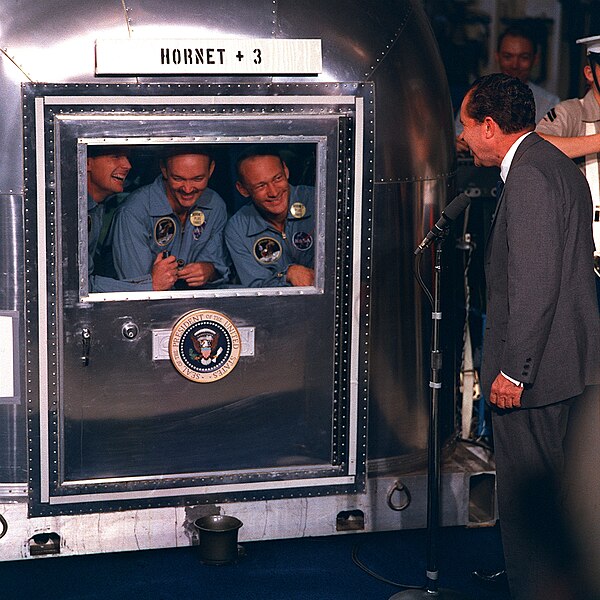




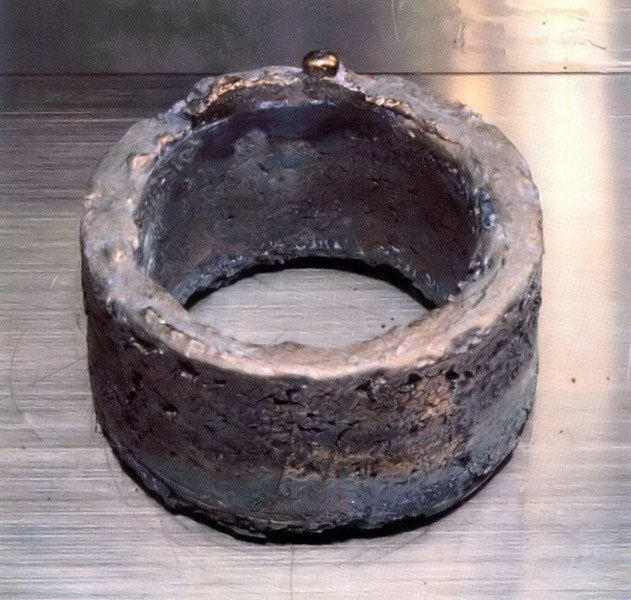

%2C_by_John_Trumbull.jpg/914px-Declaration_of_Independence_(1819)%2C_by_John_Trumbull.jpg)








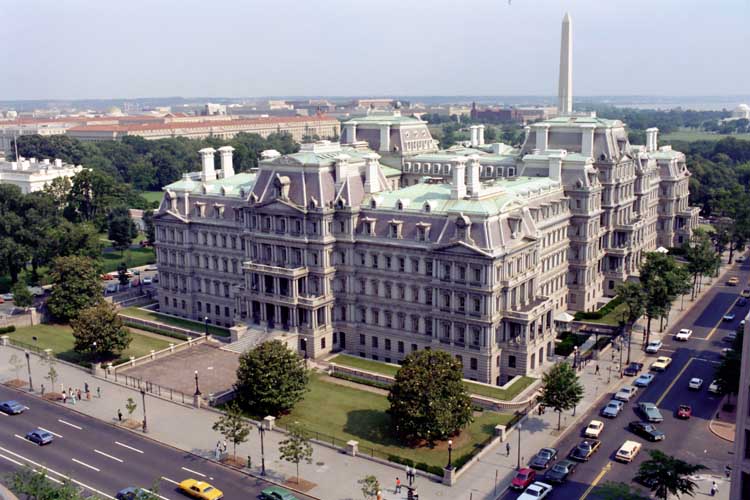





.svg/420px-Coat_of_Arms_of_Fra%27_Andrew_Bertie_(Order_of_the_Golden_Fleece).svg.png)



.svg/499px-Arms_of_Dalziel_of_Binns_(1772).svg.png)






.svg/556px-Emblem_of_Mozambique_(1982-1990).svg.png)






.jpg/830px-Wright_First_Flight_1903Dec17_(full_restore_115).jpg)









.jpg/827px-Coast_Starlight_in_the_Cuesta_Hills_above_San_Luis_Obispo%2C_1985_-_4_Photos_(30935849422).jpg)



_odalisques.jpg/899px-Carl_Blechen_-_The_Interior_of_the_Palm_House_on_the_Pfaueninsel_Near_Potsdam_-_1996.388_-_Art_Institute_of_Chicago_(cropped)_odalisques.jpg)











.jpg/466px-430-L1-S1_640_(cropped).jpg)





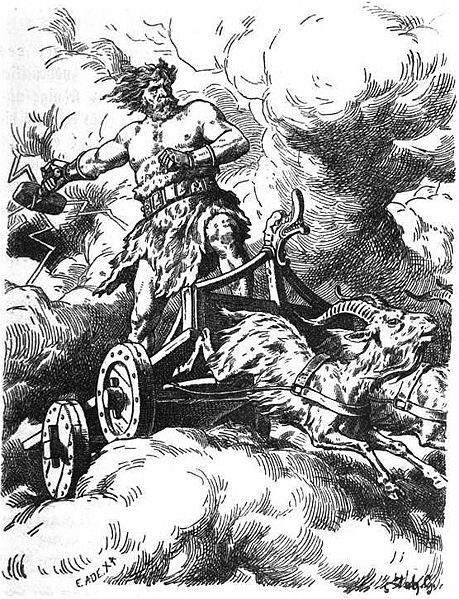






_plant_HDR.jpg/798px-Sempervivum_calcareum_(Crassulaceae)_plant_HDR.jpg)






.jpg/883px-Johann_Georg_Platzer_-_Sommer_(aus_der_Folge_Die_Freuden_der_Jahreszeiten).jpg)




.jpg/600px-Exploded_Star_Blooms_Like_a_Cosmic_Flower_(19051569762).jpg)




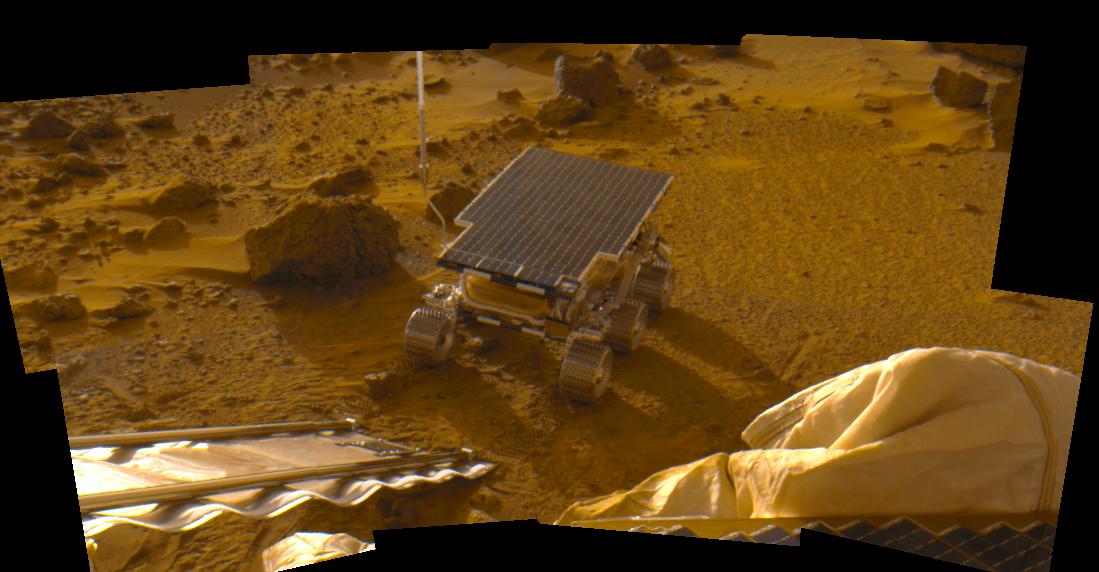








_-_FOUR_GENERATIONS_OF_THE_KALANTAROV_FAMILY_LIGHT_THE_HANNUKAH_CANDLES.jpg/913px-Flickr_-_Government_Press_Office_(GPO)_-_FOUR_GENERATIONS_OF_THE_KALANTAROV_FAMILY_LIGHT_THE_HANNUKAH_CANDLES.jpg)













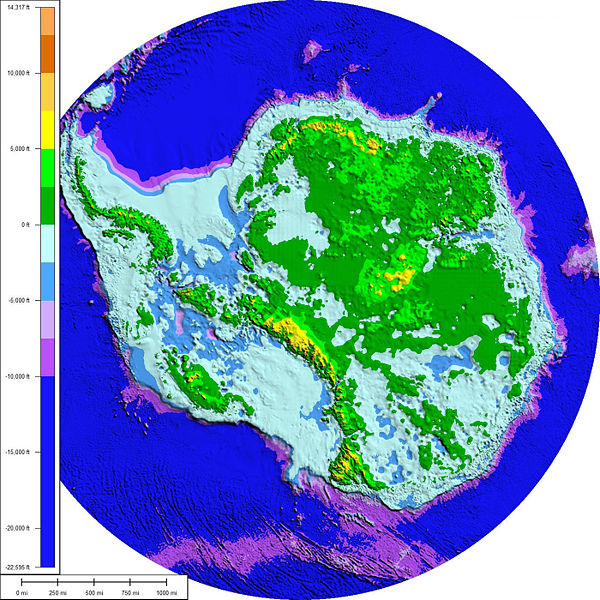












.jpg/903px-G-20_Toronto_June_2010_(11).jpg)
.jpg/426px-MSH80_david_johnston_at_camp_05-17-80_med_(cropped).jpg)
.jpg/898px-David_Johnston_near_crest_of_the_bulge_on_the_north_side_of_Mount_St._Helens%2C_17_May_1980_(USGS).jpg)








.JPG/800px-Bethlehem_Steel_(24).JPG)

















.jpg/972px-A_Kazakh_Sukhoi_Su-27P(modified).jpg)

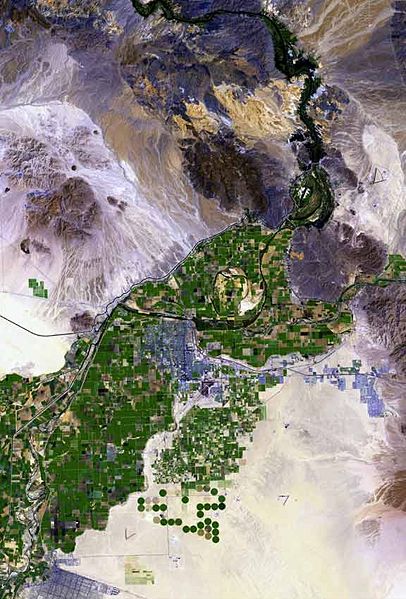




_First_Kiss_111221-N-JP983-008.jpg/840px-USS_Oak_Hill_(LSD_51)_First_Kiss_111221-N-JP983-008.jpg)

.jpg/1000px-Super_Guppy_N941_NASA_landing_(crop).jpg)








%2C_август_2012.JPG/800px-Сама_скважина(заварена)%2C_август_2012.JPG)


.jpg/754px-HD.30.375._(10427417193).jpg)
.jpg)



.jpg/901px-thumbnail.jpg)


.jpg/459px-HD.5A.043_(10555587426).jpg)

.JPG/899px-Interior%2C_U-9%2C_Speyer%2C_2014_(05).JPG)



.jpg/919px-%22Beluga_XL%22_A330-743L_(cropped).jpg)























